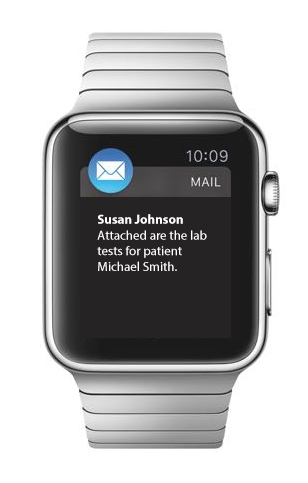S/MIME 101: How S/MIME Can Help with HIPAA Compliance
S/MIME technology offers a comprehensive email security solution that addresses each of these points—and in an industry where personal details, health care data, and insurance and payment information must regularly be transmitted via email, it isn’t hard to see why these safeguards are important. By deploying email certificates across the organization, S/MIME provides exactly the safeguards stipulated by HIPAA in a cost-effective and easy-to-use package.
As anyone involved in running a health care organization knows, there is more to health care than diagnosing patients and practicing a positive bedside manner. At its core, much of the work that takes place in the health care industry is rooted in communication. Nurses communicate with patients and their families, doctors communicate with specialists, administrators communicate with insurance adjusters, insurance companies communicate with pharmacies, and all of those different people communicate with each other.
It shouldn’t come as much of a shock, then, that email security is a major concern in the health care industry. Sectigo has written at length about the threats that organizations are exposed to via email, such as targeted spear phishing attacks designed to trick employees into giving away sensitive information—or even money. My colleague, Tim Callan, also wrote about S/MIME, and how its certificate-based authentication technology can help mitigate the risk of email-based attacks and keep confidential information safely under lock and key.
The stakes are higher in health care than in many other industries. The information that needs protecting must be defended not just for ethical, privacy-related reasons, but for legal reasons as well. The Health Insurance Portability and Accountability Act of 1996 (HIPAA) establishes firm ground rules for patient privacy, and it is up to those in the health care industry to put the appropriate measures in place to comply with those regulations.
The type of information at stake makes the health care industry a high value target for attackers. Patients’ Personal Health Information (PHI) must often be transmitted via email, and HIPAA requirements necessitate the protection of PHI using digital certificates in order for health care institutions to effectively guard patient privacy. Emails traveling beyond the firewall must have end-to-end encryption: it must be encrypted in the sending mail server, in receiving mail servers, and in transit. This level of encryption ensures that no one but the sender and receiver of the email will be able to view its content—meaning that even the operator of the server or malicious software within established email controls will be able to see it. It even works with mail servers running in third-party cloud services.
The encryption may sound complicated, but S/MIME technology offers a comprehensive email security solution that addresses each of these points—and in an industry where personal details, health care data, and insurance and payment information must regularly be transmitted via email, it isn’t hard to see why these safeguards are important. By deploying email certificates across the organization, S/MIME provides exactly the safeguards stipulated by HIPAA in a cost-effective and easy-to-use package.
Using S/MIME to encrypt emails also gives those in the industry the ability to meet HIPAA’s email retention requirements without compromising on its security requirements. Because the email content is encrypted prior to archiving, PHI remains protected from disclosure regardless of how it is stored. Critically, header information remains searchable within the application—making S/MIME encryption both perfect for secure storage and for easy information retrieval.
Regulations like HIPAA can be intimidating, but thanks to the simplicity of the S/MIME technology available to health care organizations today, complying can be very straightforward. By providing reliable end-to-end encryption and straightforward information archiving and retrieval protocols, S/MIME allows these organizations to protect PHI and safeguard their own emails from outside threats.
To learn more, read previous blogs in this series, S/MIME 101: Why Email is Vulnerable and How S/MIME Can Help and S/MIME 101: Protecting Yourself from Phishing Attacks
Stay tuned for our next post: S/MIME 101: Maintaining DFARS Compliance Using S/MIME.

S/MIME certificates work seamlessly with Apple Mail and other popular operating systems to ensure messages and attachments are encrypted, complying with HIPAA and other standards.
